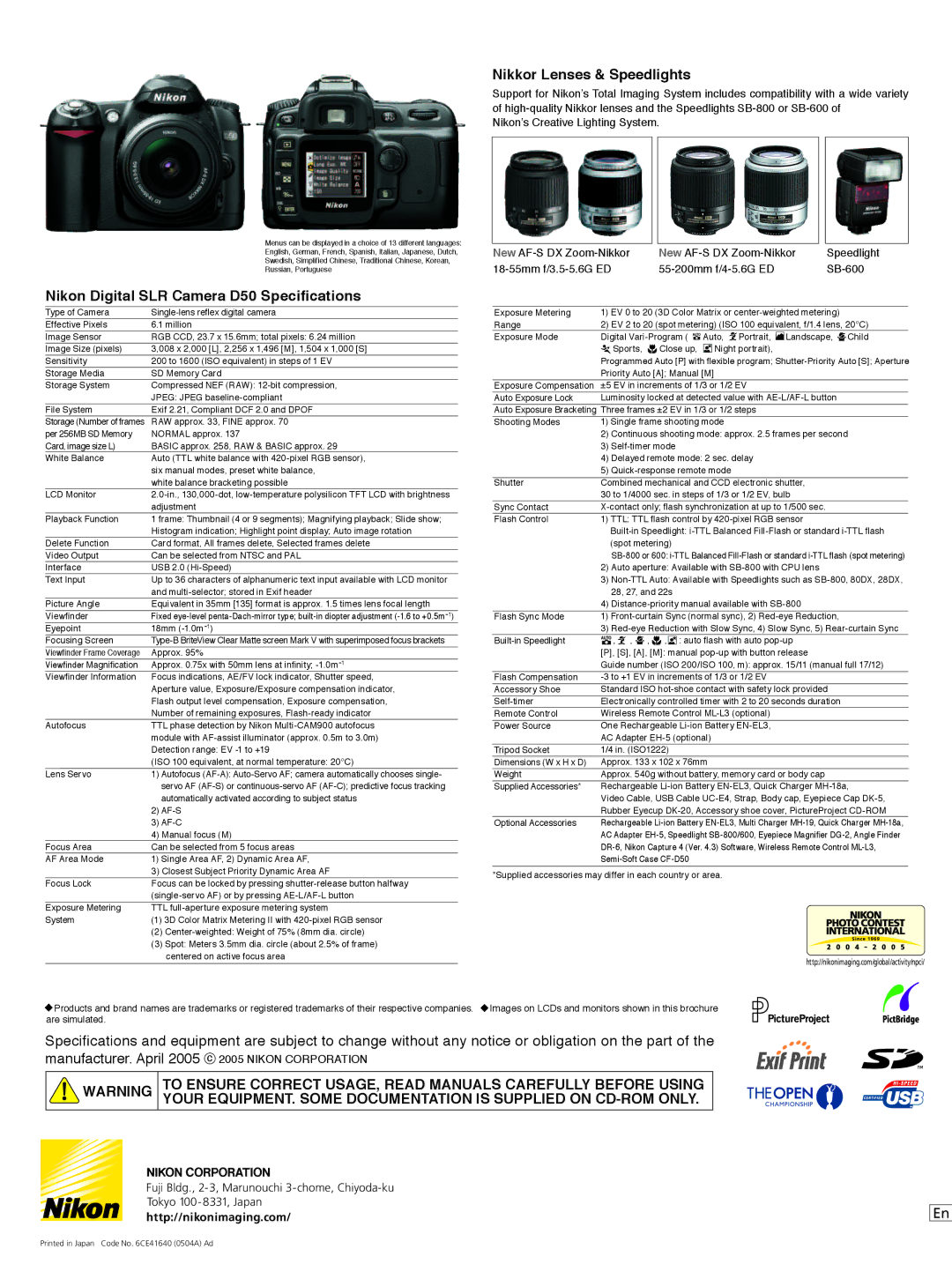D50 specifications
The Nikon D50 is a digital single-lens reflex (DSLR) camera that was introduced in 2005 and marked a significant step forward in Nikon's consumer DSLR lineup. With its compact design, user-friendly features, and impressive image quality, the D50 became a popular choice among both amateur and enthusiast photographers.At the heart of the Nikon D50 is a 6.1-megapixel CCD sensor, which produces detailed images with a maximum resolution of 3008 x 2000 pixels. This sensor allows for sharp and vibrant images, even in challenging lighting conditions. The camera supports a wide ISO range from 200 to 1600, providing flexibility for various shooting environments. The capability to shoot at higher ISO settings enables users to capture clearer images in low light without excessive noise.
One of the standout features of the D50 is its 2.0-inch LCD screen, which provides a clear and bright interface for composing shots and reviewing images. While it may seem small by today's standards, it was a significant improvement at the time of its release. Additionally, the camera offers a 5.5 frames-per-second burst mode, which allows photographers to capture fast-moving action, making it suitable for sports and wildlife photography.
The Nikon D50 employs a 3D Color Matrix Metering system, which delivers accurate exposures by analyzing the scene's brightness and color information. This system works in conjunction with the camera's autofocus capabilities, which include a multi-area autofocus system with a range of nine focusing points. This ensures that subjects remain in focus, even when they are off-center.
One of the appealing aspects of the D50 is its compatibility with a vast array of Nikon F-mount lenses. This allows users to explore various photographic styles and techniques, as they can easily switch lenses to suit their needs. The camera also features built-in white balance settings and a range of creative scene modes, making it accessible for novice photographers.
In summary, the Nikon D50 is a well-rounded DSLR that offers a blend of simplicity and advanced features. Its image quality, performance, and compatibility with various lenses make it an attractive choice for those looking to step into the world of digital photography. While newer models have since been released, the D50 remains a testament to Nikon's commitment to providing accessible and powerful photographic tools.

